Related Research Articles
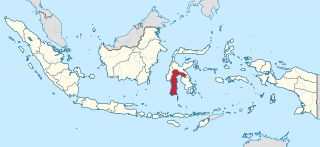
South Sulawesi is a province in the southern peninsula of Sulawesi. The Selayar Islands archipelago to the south of Sulawesi is also part of the province. The capital is Makassar. The province is bordered by Central Sulawesi and West Sulawesi to the north, the Gulf of Bone and Southeast Sulawesi to the east, Makassar Strait to the west, and Flores Sea to the south.
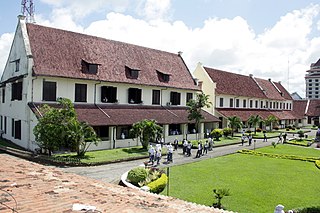
Makassar is the capital of the Indonesian province of South Sulawesi. It is the largest city in the region of Eastern Indonesia and the country's fifth-largest urban center after Jakarta, Surabaya, Medan, and Bandung. The city is located on the southwest coast of the island of Sulawesi, facing the Makassar Strait.
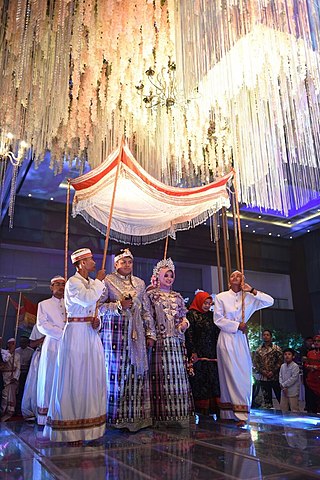
The Bugis people, also known as Buginese, are an ethnicity—the most numerous of the three major linguistic and ethnic groups of South Sulawesi, in the south-western province of Sulawesi, third-largest island of Indonesia. The Bugis in 1605 converted to Islam from Animism. The main religion embraced by the Bugis is Islam, with a small minority adhering to Christianity or a pre-Islamic indigenous belief called Tolotang.
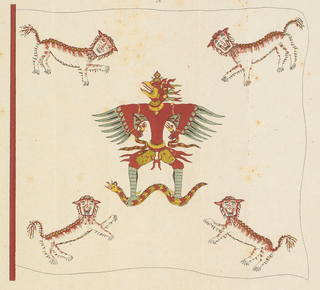
Bone was a sultanate in the south-west peninsula of what is now Sulawesi, a province of modern-day Indonesia. It came under Dutch rule in 1905, and was succeeded by the Bone Regency.
Wajoq, also spelled Wajo, Wajo', or Wajok, was a Bugis elective principality in the eastern part of the South Sulawesi peninsula. It was founded in the 15th century, and reached its peak in the 18th century, when it briefly became the hegemon of South Sulawesi replacing Boné. Wajoq retained its independence until it was subdued in the early 20th century by the Dutch colonial government. It continued to exist in some form up to the mid-20th century, when the self-governing entity was transformed into Wajo Regency in the newly independent Republic of Indonesia.
Daeng Parani was one of the five Bugis brothers from Luwu, Sulawesi, who established political dominance over the royal houses of Peninsular Malaysia. Daing Parani became personally embroiled in the politics of the Sultanates of Johor, Riau, Lingga and Pahang in the early 18th century.
Malino is a small hill town in the Gowa district of South Sulawesi, 70 km from Makassar. It is a popular getaway famous for its tropical flowers.

Sultan Hasanuddin (Sultan Hasanuddin Tumenanga Ri Balla Pangkana; was the 16th Ruler of The Sultanate of Gowa as Sombaya Ri Gowa XVI from 1653 to 1669. He was proclaimed as Indonesian National Hero on 6 November 1973. The Dutch called Sultan Hasanuddin "the Rooster of the East" as he was described as aggressive in battle.

The Sultanate of Bima was a Muslim state in the eastern part of Sumbawa in Indonesia, at the site of the present-day regency of Bima. It was a regionally important polity which formed the eastern limit of Islam in this part of Indonesia and developed an elite culture inspired by Makassarese and Malay models. Bima was subjected to indirect colonial rule from 1669 to 1949 and ceased to be a sultanate in 1958.
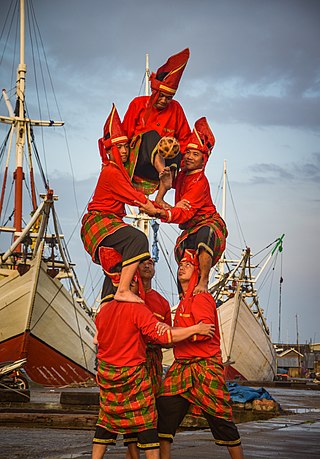
The Makassar or Makassarese people are an ethnic group that inhabits the southern part of the South Peninsula, Sulawesi in Indonesia. They live around Makassar, the capital city of the province of South Sulawesi, as well as the Konjo highlands, the coastal areas, and the Selayar and Spermonde islands. They speak Makassarese, which is closely related to Buginese and also a Malay creole called Makassar Malay.
The South Sulawesi expeditions of 1905, which included the Third Bone War and the Gowa War, were undertaken by the Royal Netherlands East Indies Army (KNIL) to force the states of south Sulawesi (Celebes) to sign the Korte Verklaring, the standard agreement whereby a native Indonesian ruler agreed to accept Dutch sovereignty. According to certain Dutch historians, the expeditions were an "obligation", because the Dutch had responsibility for law and order. One Indonesian historian has argued that it was actually strategic: that south Sulawesi was the "key" to controlling the so-called Great East. There was also an economic motive: to extend the tax-collecting powers of the government of Sulawesi. The expeditions received the imprimatur of the Governor of Sulawesi, Alexander Kroesen, in a letter dated 11 February 1904.
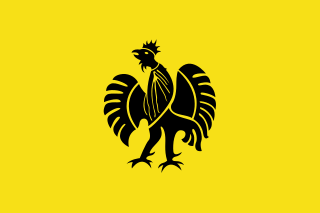
The Sultanate of Gowa was one of the great kingdoms in the history of Indonesia and the most successful kingdom in the South Sulawesi region. People of this kingdom come from the Makassar tribe who lived in the south end and the west coast of southern Sulawesi.

Fort Somba Opu was a fortified commercial center of the Gowa Sultanate. Its ruins are located in Makassar, South Sulawesi, Indonesia. The fort was the center of the Gowa Sultanate in the 16th-century until its destruction by the Dutch East India Company in 1669. The conquest of Somba Opu citadel was one of the most difficult campaigns the Company had ever undertaken in the East.
The Makassar kingdom of Gowa emerged around 1300 CE as one of many agrarian chiefdoms in the Indonesian peninsula of South Sulawesi. From the sixteenth century onward, Gowa and its coastal ally Talloq became the first powers to dominate most of the peninsula, following wide-ranging administrative and military reforms, including the creation of the first bureaucracy in South Sulawesi. The early history of the kingdom has been analyzed as an example of state formation.

Somba Opu is a district located in the Gowa Regency. South Sulawesi, Indonesia, and is part of the greater Makassar area. Somba Opu is one of 18 districts in Gowa Regency. The capital of Gowa, "Sungguminasa" is located in this district and this is the largest regency capital or 2nd largest town in South Sulawesi. A suburb to Makassar, the district is a relatively urbanized area, and can also be called as the city's bedroom community.

Arung Palakka, or La Tenritatta to Unru' was a 17th-century Bugis prince and warrior. He supported the Dutch East India Company (VOC) in the Makassar War (1666–1669) against the Gowa Sultanate in his native South Sulawesi. After the defeat of Gowa, he became the King of Bone and South Sulawesi's most powerful man.
I Maninrori Kare Tojeng, also known as Karaeng Galesong, was a Makassarese nobleman and warrior, and a major leader of the Trunajaya rebellion in Java against the Mataram Sultanate. He participated in the successful invasion of East Java and the subsequent rebel victory at Battle of Gegodog (1676). He later broke out with Trunajaya, and built a stronghold in Kakaper, East Java. Dutch East India Company (VOC) and Bugis forces took Kakaper in October 1679, but Galesong escaped and rejoined Trunajaya. He died on 21 November 1679, either by illness or murdered by Trunajaya, before the rebellion ended.
Karaeng Pattingalloang (1600–54), was the exceptionally well-read chief minister of the Kingdom of Gowa in South Sulawesi, Indonesia.
Pattingalloang was the brilliant second son of Karaeng Matoaya (c.1573-1636), who was the ruler of the Kingdom of Tallo and chief minister (Tuma'bicara-butta) of the partner kingdom of Gowa during its meteoric rise to one of the leading independent ports of Southeast Asia. Pattinggalloang succeeded his father as chief minister from 1639 until his death.
The young Pattingalloang must have been partly educated by Portuguese, much the largest European minority in the city, since as an adult he spoke Portuguese "as fluently as people from Lisbon itself". He compiled a substantial library of European books in Portuguese, Spanish and Latin, as well as Malay, and sponsored a number of translations of military manuals into Makassarese. He may have been the first Southeast Asian to understand the importance of mathematics for European scientific and military achievements. French Jesuit Alexandre de Rhodes declared him "exceedingly wise and sensible", despite his Islam. He "had read with curiosity al the chronicles of our European kings. He always had books of ours in hand, especially those treating with mathematics, in which he was quite well versed.".
Karaeng Matoaya (1573–1636) was the ruler of Tallo and the bicara-butta of Gowa from 1593 until his death. He gained power after overthrowing Tunipasuluq, and transformed Makassar into one of the main trading centre in Eastern Indonesia. He converted to Islam around 1605, adopted an Islamic name "Abdullah Awwal al-Islam" and the Islamization of Gowa and Tallo subsequently happened under his influence.
The Makasar script, also known as Ukiri' Jangang-jangang or Old Makasar script, is a historical Indonesian Writing system that was used in South Sulawesi to write the Makassarese language between the 17th and 19th centuries until it was supplanted by the Lontara Bugis script.
References
- ↑ Cummings, William P. (2007), A chain of kings: The Makassarese chronicles of Gowa and Talloq. Leiden: KITLV Press.
- ↑ Andaya, Leonard Y. (1981), The heritage of Arung Palakka: A history of South Sulawesi (Celebes) in the seventeenth century. The Hague: M. Nijhoff.
- ↑ Ligtvoet, A (1872), ‘Geschiedenis van de afdeeling Tallo (Gouvernement van Celebes)’ Tijdschrift van Indische Taal-, Land- en Volkenkunde 18.
- ↑ Taniputera, Ivan (2013), Kerajaan-kerajaan Nusantara pascakeruntuhan Majapahit: Hikayat dan sejarahnya. CV. Gloria Group, pp. 977-82.